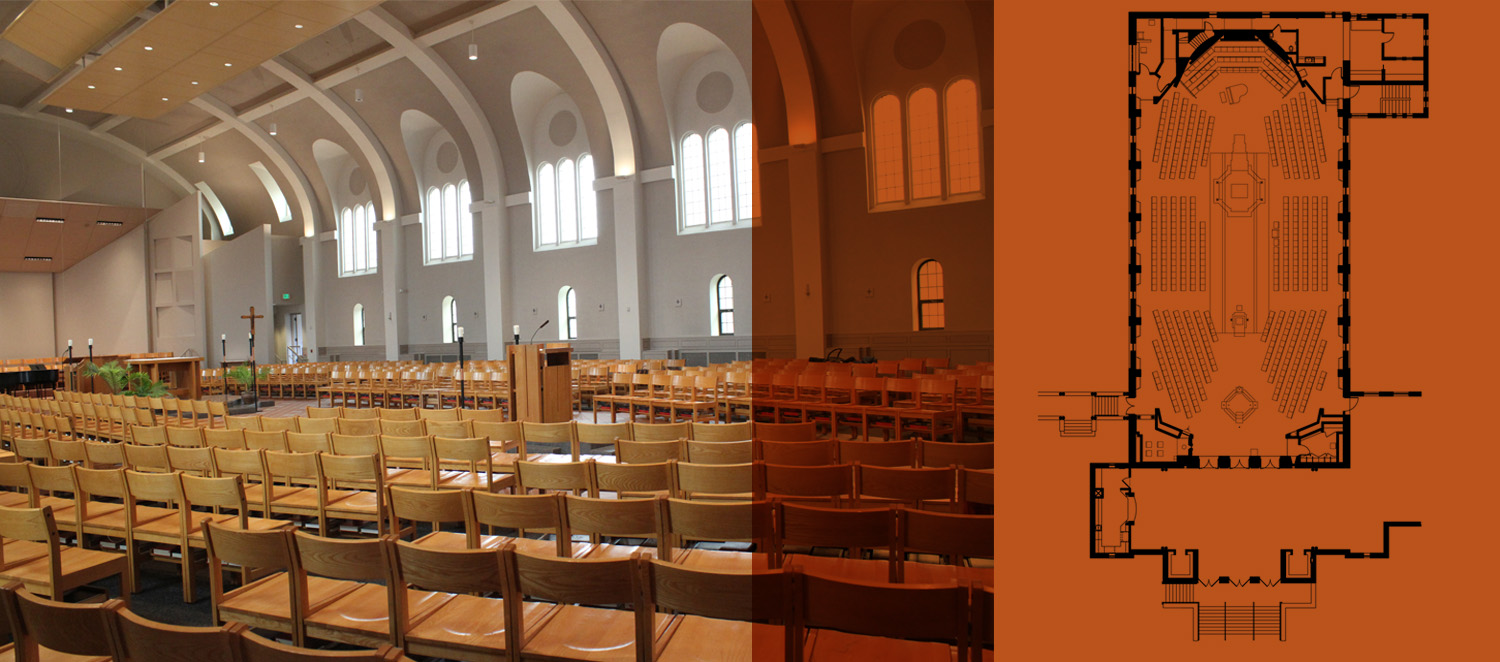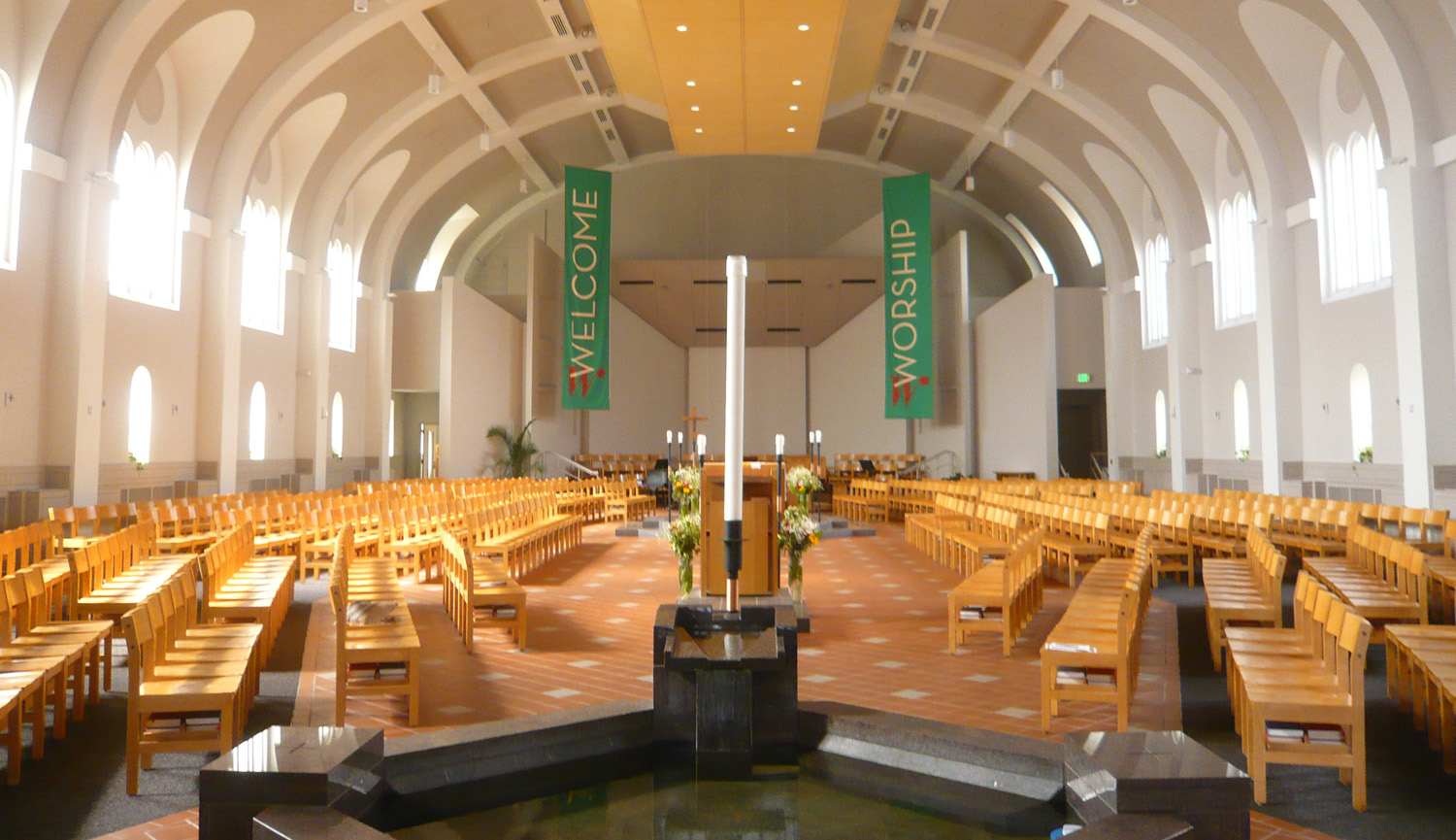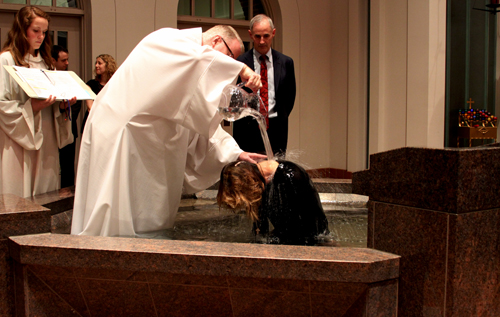The Inside Story

AN EXTRAORDINARY WORSHIP SPACE

FROM RENOVATION TO RENEWAL
by James Moudry
When you enter the worship space at St. Thomas the Apostle for the first time, you probably will be in for a surprise. It looks different from many Catholic churches! Why is that?
The story begins in 1999 when the parish decided to renovate the church. The pastor, staff, parishioners, architects and consultants were guided by the following:
- The Constitution on the Sacred Liturgy (CSL) of the Second Vatican (1962-1965);
- The U.S. bishops’ document, Environment and Art in Catholic Worship (EACW, 1978);
- The culture and tradition of the St. Thomas the Apostle parish community;
- The bricks and mortar of the church’s physical structure.
How Christ is present in the celebration of the liturgy governs the shape of this worship space.

But the U.S. bishops say, “among the symbols with which the liturgy deals, none is more important than this assembly of believers.”
They also instruct: “The most powerful experience of the sacred is found in the celebration and in the persons celebrating, that is, it is found in action of the assembly: the living words, the living gestures, the living sacrifice, the living meal” (EACW, nos. 28,29).

This teaching underlies the unique design of the worship space at St. Thomas the Apostle.
It affects the positions of the altar, ambo (or lectern), baptismal font and, last but not least, the chairs. In the celebration of the Eucharist, the presence of Christ happens, or is manifest, throughout the space. Where the assembly gathers, there is the Body of Christ. Arranging the chairs directly across from one another, or antiphonal seating as it is called, is part of our Catholic tradition. It unavoidably reminds us that positioned this way, we are looking at the Body of Christ. Shocking as it may seem, this is what the Christ looks like. This is whom we are called to love and serve.
In some churches, including St. Thomas the Apostle, pews were replaced with chairs. Parishioners came to appreciate this type of seating and, through an informal survey, it was determined that the renovated space would continue this tradition of sitting in chairs.
The word of God, proclaimed and explained at one end of the space, and the altar table, with the consecrated bread and cup at the other end, embrace and renew us each Sunday as the Body of Christ. After recalling Jesus’ words at the Last Supper, “Take and eat … this is my body … take and drink … this is my blood,” the presider further quotes Jesus, saying, “Do this in memory of me,” meaning, now YOU be my body broken and my blood poured out for one another!” We all say “Amen!” and come forward to eat that body and drink that blood so that we may become more profoundly Christ for one another.
This lively transaction of word and sacrament happening in the midst of the gathered assembly makes the open space in the center of the church a special place of spiritual energy.
It is here that we are made members of Christ’s body through a sacramental immersion in His saving death and resurrection. Conformed to Him, we become priestly people. By signing ourselves with this water, we are reminded of our baptism, which prepares us to celebrate the Eucharist, cleansed of our sins and ready for our priestly duties.
The church’s teachings about worship space point out that the tabernacle does not figure in the celebration of the Mass. Its traditional and primary purpose is to house the remaining Eucharistic hosts to be taken to the sick and the dying (Viaticum). Over the centuries, people developed the practice of praying before the Blessed Sacrament in the tabernacle. With this tradition in mind, the tabernacle is located in a special chapel suitable for private prayer.
Thus, the extraordinary worship space at St. Thomas the Apostle helps to form and guide us as Catholic Christians.
Parishioner James Moudry is a doctor of sacred theology and a liturgical consultant. He was an adviser for the renovation of the Church of St. Thomas the Apostle.


